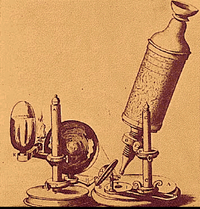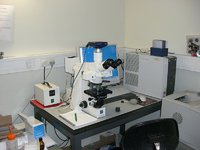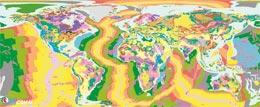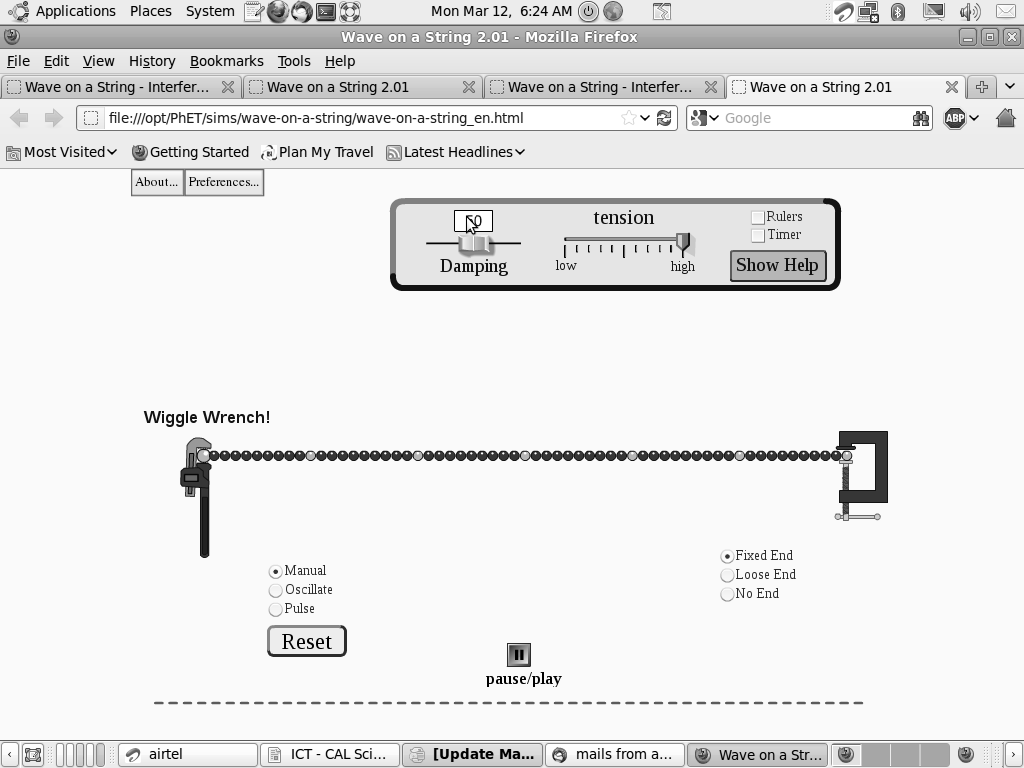Difference between revisions of "ICT in Science Teaching Learning"
| Line 1: | Line 1: | ||
| − | = 7.Science and technology | + | = 7.Science and technology - Chapter objectives = |
| − | |||
At the end of this chapter, you should be able to | At the end of this chapter, you should be able to | ||
| Line 39: | Line 38: | ||
#[http://inventors.about.com/library/inventors/blwatts.htm Development of the steam engine] | #[http://inventors.about.com/library/inventors/blwatts.htm Development of the steam engine] | ||
#[http://library.thinkquest.org/C006011/english/sites/steam_loks1.php3?v=2 Development of the first locomotive] | #[http://library.thinkquest.org/C006011/english/sites/steam_loks1.php3?v=2 Development of the first locomotive] | ||
| + | |||
| + | ===Lab Exercises=== | ||
| + | Use the internet to find out the answers for the following questions. | ||
| + | # How is the monsoon predicted? | ||
| + | # What is a cell phone tower? | ||
| + | |||
| + | =Information and Communication Technologies (ICTs)= | ||
| + | When you tried to answer the above questions, you may have come across words like satellites, signals, transmission, receiver, radio waves, etc. All of these words refer to the various technologies that are used for communication. Can you think of all the things that we use for communication?<br> | ||
| + | Cell phones | ||
| + | You are right! The first word that comes to our mind is a cell phone. You may have seen many people carry a cell phone these days. Can you make a list of all the things a cell phone does? | ||
| + | |||
| + | |||
| + | |||
| + | |||
| + | |||
| + | |||
| + | |||
| + | |||
| + | |||
| + | |||
| + | A cell phone functions like a phone, a camera and a computer. Yet, it does all of this using a few components. | ||
| + | Parts of a cell phone | ||
| + | If you open up a cell phone, you will see the following parts: | ||
| + | A circuit board : This is the brain of the cellphone and gives all the instructions to the phone. We saw in the earlier chapters about how the integrated chip instructs the computers. A similar integrated circuit directs the cell phone also. | ||
| + | A keyboard : This is also very similar to the computer keyboard and you use the key board to operate the cell phone. | ||
| + | Display : This is similar to the computer monitor. | ||
| + | Other parts include a microphone, antenna, speaker and a charger | ||
| + | One of the important parts of the cell phone is called the SIM card. The SIM card connects the phone to the network , your location. This helps the phone connect to a cell phone network and can also store phone numbers. It can be removed from one phone and put in any other cell phone. | ||
| + | Lab Exercise | ||
| + | 1. Draw a concept map of cell phone using freemind. Your concept map can include all the features of a cell phone, charges on a cell phone, cell phone providers, etc. | ||
| + | 2. Ask your teacher to open a cell phone and identify all the parts on it. . | ||
| + | Why is a cell phone called a cell phone? | ||
| + | We also call the cell phone a mobile. Why is it called mobile? We can use it to communicate when we are moving and it is not limited to a fixed location. A cell phone is like a radio. We will discuss below how a radio works. A cell phone is the telephone and radio combined! The cell phone is called a cell phone because it functions by dividing a geographical area into small plots or cells through which the transmission takes place. We will come back to this topic after we learn a little bit about radio. | ||
| + | |||
| + | |||
| + | |||
| + | |||
| + | |||
| + | |||
| + | |||
| + | Radio | ||
| + | Many communication devices we know function through radio waves. Radio waves are electromagnetic waves. They carry energy through repeated propagation of electric and magnetic fields. Radio waves carry a certain amount of energy and can travel over large distances. When the wave reaches the destination, the receiver gets the amount of information. We cannot see radio waves but we can detect them by building receivers that can detect them. These are called as antennae. They scan the environment for radio signals and respond when they find a signal. They detect the radio signal by the effect of the changing electrical and magnetic fields. Frequency gives a measure of how fast the radio wave is being produced and depends on the source from where the radio waves start. Different radio waves come at different frequencies and we need to build transmitters that detect them. | ||
| + | How is sound transmitted using radio waves? | ||
| + | Sound is a pressure wave – when we produce a sound it travels by disturbing the air particles. If there is no medium, sound cannot travel. What happens when we hear something on a radio? Originally sound is produced and then it converted into radio waves. These waves are sent and received through instruments called antennae. When your radio antennae receives this radio wave, this is converted back into sound and is played. | ||
| + | Use of radio waves in astronomy | ||
| + | Radio waves are also produced by many celestial objects. By detecting the radio waves that travel through the atmosphere, it is possible to construct images of the astronomical objects. Radio waves can pass through dust and gas unlike light. Radio astronomy alongwith optical observation is allowing us to understand the universe better. | ||
| + | Lab Exercise | ||
| + | For this we will need to open an application called PhET on the computer. You can find PhET under Applications> Education> Science. PhET is a software application contains computer demonstrations of experiments and activities. These are called simulation. A simulation is like doing an experiment on the computer. We will learn more about simulations a little later when we learn about the use of computers in science. | ||
One of the technologies that has a great influence on many areas of our life today is Information and Communication Technologies (ICTs). These include the computer and the internet for transmitting information. You have already learnt about the history and development of computers. Now we will look at the various ways in which computers can be used for scientific research and study. | One of the technologies that has a great influence on many areas of our life today is Information and Communication Technologies (ICTs). These include the computer and the internet for transmitting information. You have already learnt about the history and development of computers. Now we will look at the various ways in which computers can be used for scientific research and study. | ||
Revision as of 06:58, 18 November 2013
7.Science and technology - Chapter objectives
At the end of this chapter, you should be able to
- understand the way science and technology have grown
- develop some basic understanding of ICTs that we are surrounded by – phones, TV, radio, satellites and computers
- use different software applications for learning subject topics
- understand simulations and how are they used
- use the internet to access information
You will work with your teacher in this module. She will guide you through the various topics as well as give examples for each of these topics from your syllabus. Several examples here will require you to do practical experiments in the science lab as well as observe things outside your classroom.
Science and technology
Many times you hear the word science and technology together. What is the connection between the two? Do you know? Study of science includes a method of observing things around us, thinking about why those events happen, explaining why the events happen, recording information about the events and also predict what might happen. Often, scientists imagine what might be the solution and what might be the answer to the puzzles around us. The understanding of phenomena can lead to the development of tools – this is what we call technology. The technology can provide us more methods of observing, experimenting and recording. And this in turn results in the advancement of science. Thus, science and technology share a symbiotic relationship.
A symbiotic relationship is when two phenomena work together and one affects the other.
This term originated in biology and ecology to describe interactions between different organisms.
Watch the following video for examples of symbiotic relationship.
Can you think of examples of where technology has helped the growth of science? One area is that of cell biology. Until the microscope was invented by Robert Hooke and Anthony Leeuwenhoek, the study of cells was not possible. Now we study structure of cells, growth of cells, disease-affected cells, cell reproduction, gene sequencing and DNA using many advanced microscopes, cameras; the data and images are analyzed using computers.

|

|
| The early microscope invented by Robert Hooke |
Fluorescent microscope with a digital camera and computer |
The images captured by the microscope and camera can be input into the computer for further study and research. Many complex problems in biology are being studied through the use of computers. Some of these areas include cancer research, study of how certain diseases develop and development of medicines.
Similarly, our understanding of astronomy has been expanded after the invention of the telescope. But to make a telescope or microscope, we need to understand the properties of light. We must understand how a lens works, how light travels before we can make a telescope. Thus, science and technology are very closely connected.
Many technology developments have changed the way we live – one example is the development of the steam engine. Visit the following web links and discuss with your teacher the changes that were brought by these technologies.
Lab Exercises
Use the internet to find out the answers for the following questions.
- How is the monsoon predicted?
- What is a cell phone tower?
Information and Communication Technologies (ICTs)
When you tried to answer the above questions, you may have come across words like satellites, signals, transmission, receiver, radio waves, etc. All of these words refer to the various technologies that are used for communication. Can you think of all the things that we use for communication?
Cell phones
You are right! The first word that comes to our mind is a cell phone. You may have seen many people carry a cell phone these days. Can you make a list of all the things a cell phone does?
A cell phone functions like a phone, a camera and a computer. Yet, it does all of this using a few components.
Parts of a cell phone
If you open up a cell phone, you will see the following parts:
A circuit board : This is the brain of the cellphone and gives all the instructions to the phone. We saw in the earlier chapters about how the integrated chip instructs the computers. A similar integrated circuit directs the cell phone also.
A keyboard : This is also very similar to the computer keyboard and you use the key board to operate the cell phone.
Display : This is similar to the computer monitor.
Other parts include a microphone, antenna, speaker and a charger
One of the important parts of the cell phone is called the SIM card. The SIM card connects the phone to the network , your location. This helps the phone connect to a cell phone network and can also store phone numbers. It can be removed from one phone and put in any other cell phone.
Lab Exercise
1. Draw a concept map of cell phone using freemind. Your concept map can include all the features of a cell phone, charges on a cell phone, cell phone providers, etc.
2. Ask your teacher to open a cell phone and identify all the parts on it. .
Why is a cell phone called a cell phone?
We also call the cell phone a mobile. Why is it called mobile? We can use it to communicate when we are moving and it is not limited to a fixed location. A cell phone is like a radio. We will discuss below how a radio works. A cell phone is the telephone and radio combined! The cell phone is called a cell phone because it functions by dividing a geographical area into small plots or cells through which the transmission takes place. We will come back to this topic after we learn a little bit about radio.
Radio Many communication devices we know function through radio waves. Radio waves are electromagnetic waves. They carry energy through repeated propagation of electric and magnetic fields. Radio waves carry a certain amount of energy and can travel over large distances. When the wave reaches the destination, the receiver gets the amount of information. We cannot see radio waves but we can detect them by building receivers that can detect them. These are called as antennae. They scan the environment for radio signals and respond when they find a signal. They detect the radio signal by the effect of the changing electrical and magnetic fields. Frequency gives a measure of how fast the radio wave is being produced and depends on the source from where the radio waves start. Different radio waves come at different frequencies and we need to build transmitters that detect them. How is sound transmitted using radio waves? Sound is a pressure wave – when we produce a sound it travels by disturbing the air particles. If there is no medium, sound cannot travel. What happens when we hear something on a radio? Originally sound is produced and then it converted into radio waves. These waves are sent and received through instruments called antennae. When your radio antennae receives this radio wave, this is converted back into sound and is played. Use of radio waves in astronomy Radio waves are also produced by many celestial objects. By detecting the radio waves that travel through the atmosphere, it is possible to construct images of the astronomical objects. Radio waves can pass through dust and gas unlike light. Radio astronomy alongwith optical observation is allowing us to understand the universe better. Lab Exercise For this we will need to open an application called PhET on the computer. You can find PhET under Applications> Education> Science. PhET is a software application contains computer demonstrations of experiments and activities. These are called simulation. A simulation is like doing an experiment on the computer. We will learn more about simulations a little later when we learn about the use of computers in science.
One of the technologies that has a great influence on many areas of our life today is Information and Communication Technologies (ICTs). These include the computer and the internet for transmitting information. You have already learnt about the history and development of computers. Now we will look at the various ways in which computers can be used for scientific research and study.
Making large calculations
Computers make it easy for scientists to do calculations with large numbers, for example number of cells or number of stars.
Make models for study
Experiments in science are of different kinds. Some are small, some are large, some are simple, some need lots of equipment, some are very complex and need lots of skill to do and some are impossible to do physically. Can you think of some examples of each of these kinds?
Computers help scientists in making models of complex and physically difficult experiments. If we want to find out whether a medicine will work or not, it is possible to build a computer model of the human cell for simulating how it will respond to the medicine. Similarly, we cannot go to a star and study the radio waves produced; but we can model it on a computer.
|
|
|
|
This is simulation of a supernova explosion. This has been made on the computer so that scientists can study what causes an explosion, what happens during an explosion and what is the effect afterwards.
|
This is a geological map of the world – you can see the rock structure in the Himalayas, Andes and other mountain ranges of the world. This map has been produced from many local, paper maps and putting them on the computer.
|
Connecting scientists and building databases
Science is everywhere. When
computers are used to share the data collected, more people can have
access to it. In Bengaluru, the National Centre of Biological
Sciences wants to build a database of scientific data by getting data
on trees and plants from all over Karnataka. Such a database will be
available to many people.
Lab exercises
The internet is a very useful resource for getting information about many topics.
1. With the help of your teacher,
look at the following websites:
[[1]]
[[2]]
This will give you information about
satellites and how they are made and used.
2.
Check the internet for information about the Citizen Sparrow Project
to see how the computer can help collect scientific information from
many people and help make analyses.
What are computer simulations?
Computer simulations are very useful for scientific research when a physical experiment may be very costly or dangerous or extremely time consuming to do. When a scientist is studying a problem, she will make assumptions about what causes the change and make predictions about what will change. This information can be input to the computer and the simulation will make all the calculations and show what changes happen. Sometimes, the changes that the simulation will show will be different from what the scientist predicted. This will help the scientists refine the theory. The simulation shows the experiment on a computer. The scientist can change the inputs to see how the experiment changes. This helps in the development of new knowledge.
Simulations are different from
animations
Computer models are different from
animations. In an animation, we simply see a movie which shows a
phenomenon happening. The inputs cannot be changed.
Your teacher will show you the
following. Write down what you observe in the two activities. Is
there any difference between the two?
- Applications> Education> PhET> My Solar System
- Applications> Education> Kstars> Tools> Solar System
- Check out the following link on the solar system.
[[3]]
Computer simulations for studying science
PhET is a software application that contains computer demonstrations of experiments and activities. These are called simulation. A simulation is like doing an experiment on the computer.
Lab exercises
You can find PhET under Applications> Education> Science. We will learn more about simulations a little later when we learn about the use of computers in science. The PhET simulation can also be found on the Internet at [[4]].
When you open PhET you will see a
page like the one shown below.
When we click on Play with sims
– it will open simulations in various subjects. We will click on
Physics and scroll down to the simulation on Waves on a String. When
we want to open a simulation, we click on the green rectangle which
says 'Run Now'. And this will start the simulation.
Exercise 1 : Observe
the simulation 'Wave on a String'
You will see a picture like this.
This is similar to a situation that you might have had where you tie
a rope to one end and the other end is in your hand.
When you shake your hand, the rope
will shake though it will be fixed at the other end. Similarly, if
we move the wrench here, the rope (which is a collection of beads)
will also move without being removed from the other end.
This simulation will allow you to
move the string in different ways using the mouse and the various
choices you have. Your teacher will explain what these various
choices are.
Physics simulation:
Waves on a string -I
 In
this simulation, you would have noticed two words – tension and
damping. Tension is the force that will get set up in a rope when
you pull on it. How much tension gets set up depends on the material
of the string. If you have a cotton saree as a rope and a nylon
string as a rope, they will move in different ways. Damping means
reducing. When I pull up the rope, the rope will try to resist that
pull and this resistance is called damping.
In
this simulation, you would have noticed two words – tension and
damping. Tension is the force that will get set up in a rope when
you pull on it. How much tension gets set up depends on the material
of the string. If you have a cotton saree as a rope and a nylon
string as a rope, they will move in different ways. Damping means
reducing. When I pull up the rope, the rope will try to resist that
pull and this resistance is called damping.
Answer the following questions
- When you 'move' the wrench up and down, did the string move? How did it move? How did each of the beads move?
- When you look at the simulation, it looks like something is moving from one end to another. What is moving?
- Let us understand what happens when you move the string using the manual option. You can complete the table below.
|
Activity
|
What do you observe ?
|
|
Move the wrench upwards
|
|
|
Move the wrench downwards
|
|
|
Move the wrench upwards and downwards
|
|
|
Are the beads in the string moving left to right; right to left, or up and down? What does this tell you about waves
|
|
|
How fast does the string move when tension is high and when tension is low. Is there a difference and why?
|
|
|
When you add damping how does the string move
|
- Let us understand what happens when you move the string using the oscillating option. You can complete the table below. You will see that there is a green rectangle on the top in which there are control buttons for amplitude, frequency and damping. We know what damping is. At the end of this simulation, you will be able to describe amplitude and frequency.
|
Increase and decrease amplitude
|
How does the wave look? How do the beads move? What changes in the beads when you change the amplitude? Do all the beads move in the same way? When you increase or decrease amplitude, what happens to the frequency
|
|
Increase and decrease frequency
|
How does the wave look? How do the beads move? What changes in the beads when you change the frequency? Do all the beads move in the same way? When you increase or decrease frequency, what happens to the amplitude?
|
|
Change the values of tension and damping
|
What do you observe is happening to the wave? What happens if the wave end is not fixed but loose?
|
|
Use the ruler to see how the beads move?
|
How far do the beads jump? Does it change?
|
 When
you use the ruler you will notice that some of the beads jump very
high – much more than when the wave started. Why is this so? How
high the beads go is related to the amplitude. Discuss with your
teacher why the beads jump so high after a while and also the
relationship with the amplitude of the wave. Describe what you
understand by amplitude and frequency.
When
you use the ruler you will notice that some of the beads jump very
high – much more than when the wave started. Why is this so? How
high the beads go is related to the amplitude. Discuss with your
teacher why the beads jump so high after a while and also the
relationship with the amplitude of the wave. Describe what you
understand by amplitude and frequency.
Chapter summary
- Science and technology are linked; technology has helped the development of science.
- Computers have made many improvements in how we study science. They can be used to simulate models, do large calculations,develop databases and help connect people.
- The computer and Internet technologies can also be used for studying science in schools.
- You have studied about ecosystems, biomes through videos.
- You have seen the difference between simulation and animation.
Exercises
- Open the PhET simulation on Colour Vision. Run both the simulations – RGB Bulbs and Single Bulb. Then, answer the following questions:
- When only one bulb is used, what colour does the man see? Why?
- When more than one colour is used, what colour does the man see? Why? Does this change if I move the sliders on each of the bulbs the man sees? If it changes, why does it change?
- When all the three bulbs are used, what is the colour that the man sees? Where else do we see white light? If R,G,B when mixed give the white light, what can you say about the nature of the red, green and blue.
- When does the man see any colour and when does he see black?
- What is the filter doing? Explain the difference in colour between the source being monochromatic (single colour) and white.
- Open the PhET simulation on Friction under Physics/ Motion. Run the simulation and answer the following questions.
- What do the moving green and yellow circles indicate?
- When you are rubbing the yellow book on the green book what happens? How do you know that the heat is being generated?
- When the temperature goes very high, the yellow circles fly off. What does this mean physically?
Additional resources
- [[5]] - For a description of radio astronomy
- http://www.computersciencelab.com/ComputerHistory/History.htm' – 'Growth in computer technology



